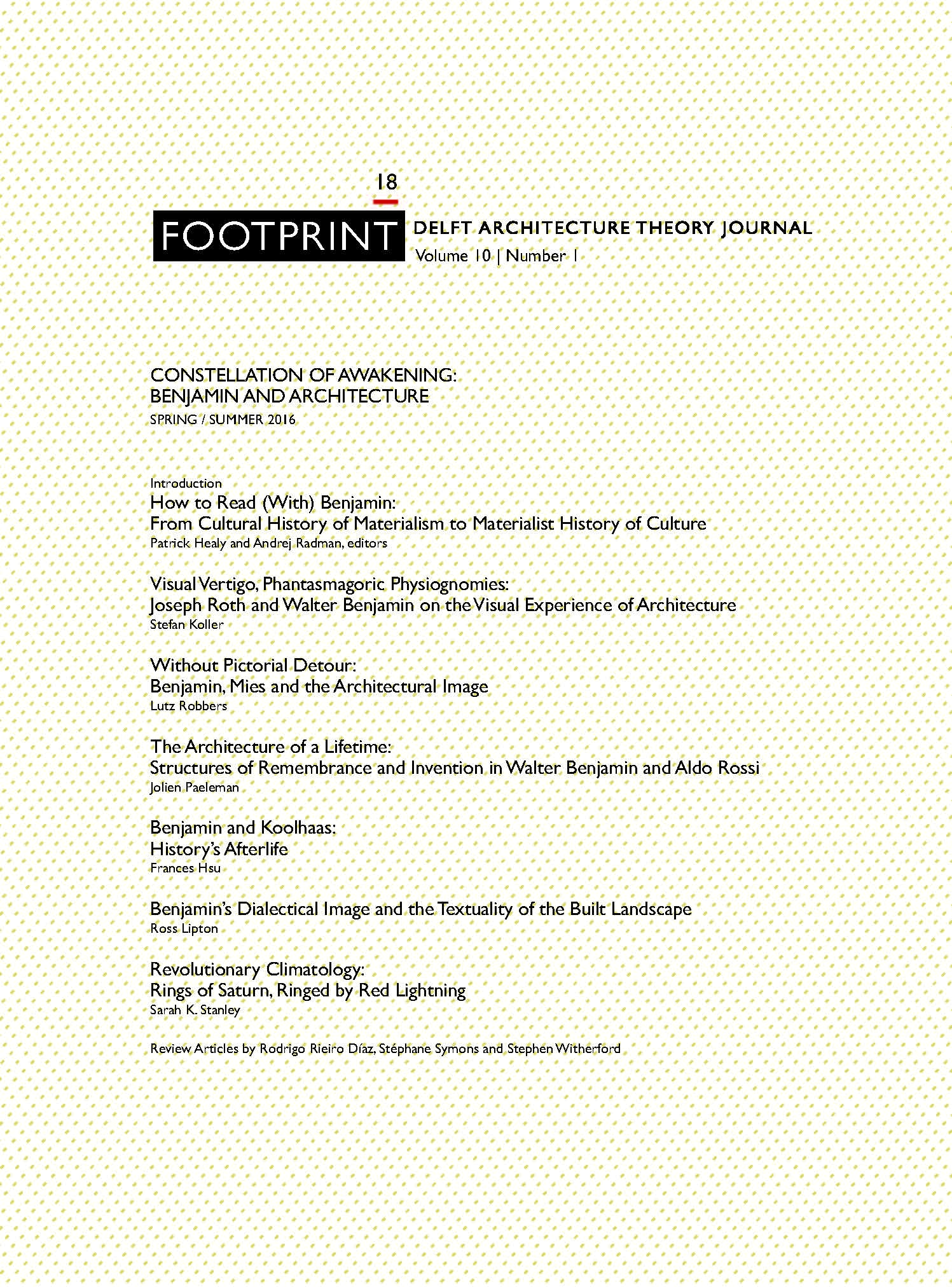Bankside Urban Forest: Walter Benjamin and City Making
DOI:
https://doi.org/10.7480/footprint.10.1.981Abstract
Walter Benjamin’s metaphor of his experiences of the city, specifically Paris, as a forest informs this review article in considering what conditions within the contemporary metropolis of London might reflect such an experience. Benjamin describes ‘losing oneself’ in the city as a skill that the wanderer can develop as opposed to simply getting lost. Through the direct experience of the studio, Witherford Watson Mann Architect’s proposals for the Bankside Urban Forest in south London is used as a means to explore the themes Benjamin opens up. Bankside’s ‘urban interior’ was a place we lost ourselves in the way Benjamin describes, becoming alert to a series of particular conditions that grow out of the area’s deep structure. By starting with what we encountered we developed a counter-intuitive framework for re-imagining the district’s public spaces and the life these could support. This raises the question of how we should intervene in city making within such districts. Benjamin’s metaphor challenges the conventional commercial models for developing our cities and suggests that other models need to be created.
References
Louis Aragon. Paris Peasant (London: Pan Books, 1971).
Walter Benjamin, ‘A Berlin Chronicle’, in One Way Street and Other Writings, (London: Verso, 1979).
Robert Pogue Harrison, Forests: The Shadow of Civilization, (Chicago: University of Chicago Press, 1992).
Dalibor Vesely, ‘Between Architecture and the City’ in Phenomenologies of the City, ed. Henriette Steiner and Maximilian Sternberg (Farnham: Ashgate, 2015).
Ken Worpole, ‘The Bankside Urban Forest’, Topos 61, Urban Space (2007).
Downloads
Published
Issue
Section
License
- Authors retain copyright and grant the journal right of first publication with the work simultaneously licensed under a Creative Commons Attribution License that allows others to share the work with an acknowledgement of the work's authorship and initial publication in this journal.
- Authors are able to enter into separate, additional contractual arrangements for the non-exclusive distribution of the journal's published version of the work (e.g., post it to an institutional repository or publish it in a book), with an acknowledgement of its initial publication in this journal.





